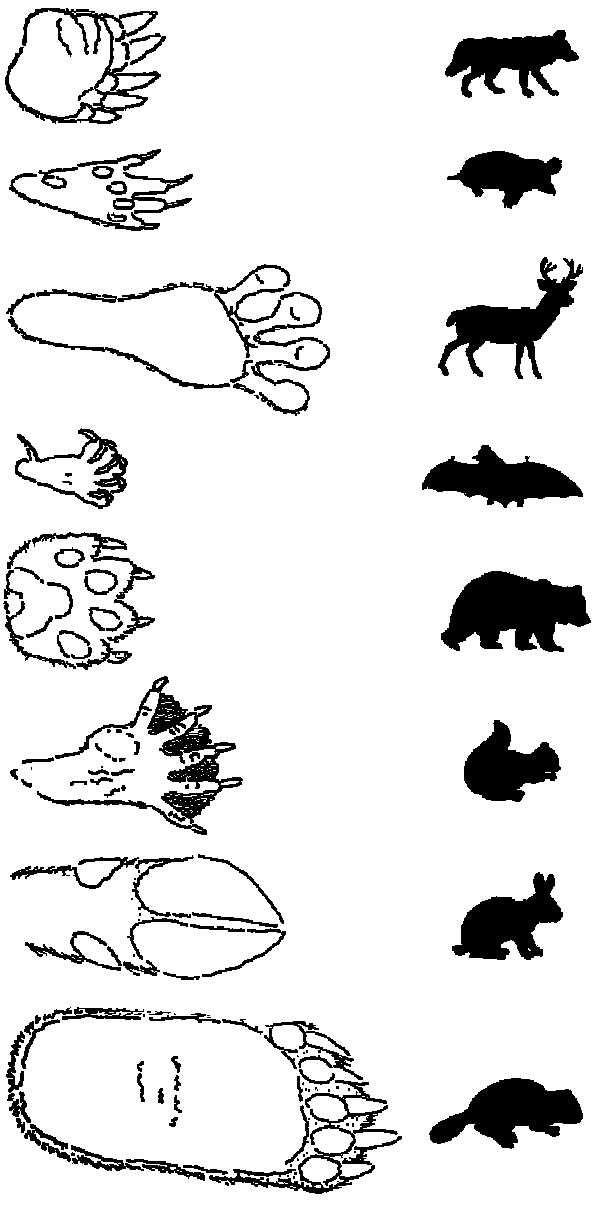

Animal Tracking

While on a hike, you do not have to see an animal with your eyes to know it is present. Tracking animal footprints in the snow, sand or mud is a popular way of detecting what type of animal is in the forest. Match the tracks below with the animal and recognize the differences between each. Ask yourself questions on why each track is different: why does one have webbed feet, why does one have big claws?
This material can be used to fulfill partial requirements for the Observer Badge.
Animal tracks are not the only signs of animals. The sound animals make, like bird calls or wolf howling, is one means of being aware of nature on a hike. Others signs include skat, animal kills, marks on trees/bushes, and smells (like from a skunk).

The correct answers for the match (in order shown) are Mole, Squirrel, Rabbit,
Bat, Wolf, Beaver, Dear, Bear
You should carefully look at the track pattern, observing the footprint arrangement as well as the distance between paces. Below are some examples of these differences. Pace spacing can change if the animal is walking, running or jumping. Another sign to watch out for are if other animal tracks are nearby. This can tell you if the animal is traveling in a pack or herd, or if it is stalking prey.
This is Baden-Powell's experience with tracking:
Chapter IV. Getting Good Sport—Life in the Wild
From Baden-Powell, What Scouts Can Do: More Yarns, 1921"Here is also a short account of a little exercise carried out one morning in observing "sign" and reading the meaning of it.
On the road were the tracks of two horses side by side— they had evidently gone side by side, as the tracks never crossed each other, but turned and changed their course together. The one on the near side (left) was evidently a horse of ordinary size, judging by the size of its hoofs and length of stride. The one on the off-side (right) was evidently a cob, being of smaller build, but stout—the hoof-prints airing a wider track and shorter stride than the horse; it was also going rather lame, one foot making a shorter stride than the others and not treading so heavily on the ground.
From the fact that the cob was lame it was probable that nobody was riding it; and from its moving alongside another horse on its off-side it was probable that it was being led by a man on the horse (he would be holding his own reins in his left hand and would lead a led horse with his right.
Then the lame foot was shod differently from the others, with a shoe which was evidently intended to give relief to injury at the heel, so that the cob had been lame for some time.
From these signs I made out that the cob belonged to a stout old gentleman who had begun life as a poor man, but was now well off."
An excellent guide to tracking animals can be found at the Outdoor Action Guide to Nature Observation & Stalking web link